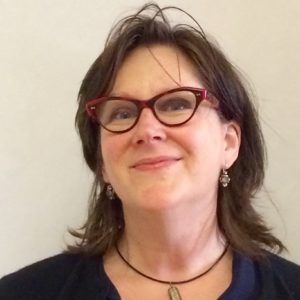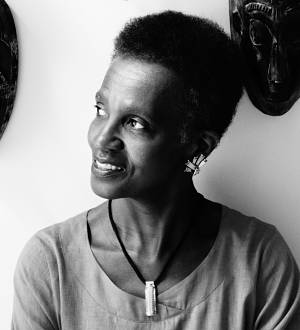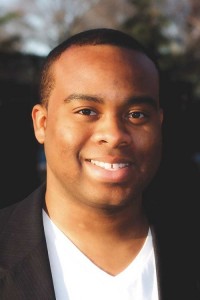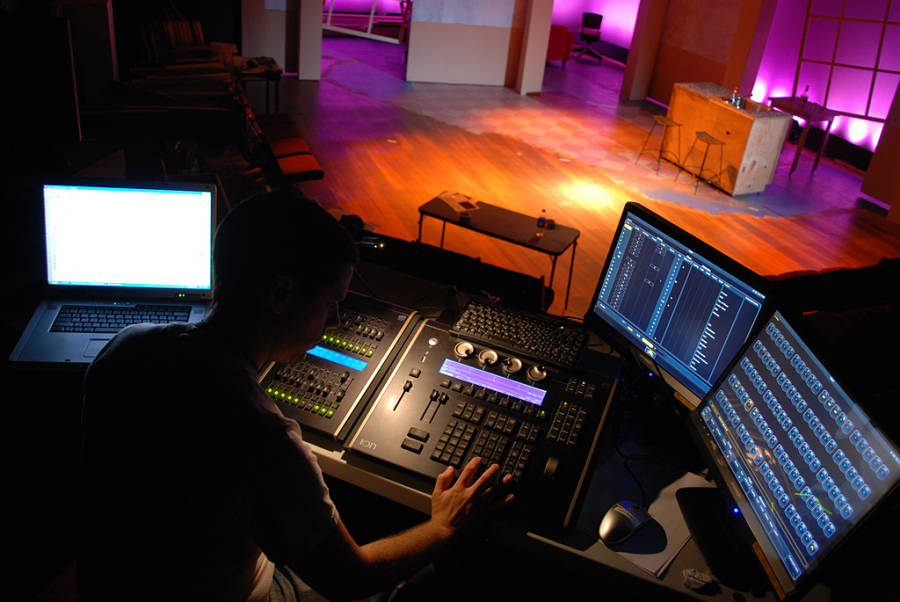It’s about time we shine a light on those shining the light. Theatre has a diversity problem and lighting design is not exempt. While American Theatre takes the time this summer to celebrate the great history and future of the field, it’s important to acknowledge where the field is now. And right now the field is incredibly white and incredibly male.
For one, it’s sobering to see how few women work in an industry that boasts such illustrious forebears as Jean Rosenthal and Tharon Musser. One of the starkest indicators was the 2017 HowlRound article from Porsche McGovern, which laid out, in painful detail, exactly what its headline suggests: “Who Designs and Directs in LORT Theatres by Gender.” The study, which looks at the 2012-13 through the 2015-16 seasons for League of Resident Theatres companies, shows that two-thirds of all LORT designers in that period were men who took almost three-quarters of all design jobs. Costume design is the only area where women held a majority of the design slots. In fact, costume design is the only area where women had more than 20 percent of the positions or made up more than 25 percent of the hiring pool.
Lighting design, meanwhile, clocked in with 16.1 percent of jobs going to women, with women making up 20.7 percent of the lighting work force (or 78 out of 377 lighting designers hired in four-season span).
After first seeing the statistics, lighting designer M.L. Geiger admitted that she felt angry. She never let it affect her work, but seeing the actual statistics laid out made her reconsider how she had been thinking about her industry.

“I denied for years that there was any real gender thing,” said Geiger, whose credits include Off-Broadway productions at Atlantic Theatre Company, Playwrights Horizons, and Primary Stages, as well as the Broadway production of The Constant Wife at Roundabout Theatre Company. She said she “just assumed it was somehow failing on my part, or luck. I thought there was something (going on) but I didn’t really think it was that bad.”
Studies like this solidified a feeling that Geiger remembers having as far back as the early 1990s. There had been a shift in a field largely founded by women to a practice dominated by men. Around 1991, Geiger turned to her Yale mentor and fellow designer, the Tony-winning Jennifer Tipton, and questioned if their field was changing or if it was more sexist than she previously thought.
“We kept feeling like there’s fewer and fewer women,” Geiger said. “I don’t get it. Then the League of Professional Theatre Women study, and then also Porsche McGovern’s LORT study—we’re like, well, we’re clearly not imagining it. We may have thought we were for a while.”
A study from the League of Professional Theatre Women released in February 2018 found that, between May 2010 and April 2017 in the 23 Off-Broadway theatres they analyzed, an overwhelming number of lighting design positions were given to men. The low point was during the 2011-12 season, when only eight percent of the positions were held by women. The high point was the most recent season, the 2016-17 season, which still only saw 21 percent of lighting positions go to women.
Broadway doesn’t fare any better. Between June 2017 and April 2018, according to Broadway by the Numbers, with data collected by Alexander Libby, Bella Sotomayor, Florian Bouju, and Serene Lim, only 19 percent of Broadway lighting designers were women.

“It’s pretty scary, the statistics,” said Kathy Perkins, a lighting designer whose work includes productions at St. Louis Black Rep, Arena Stage, Victory Gardens, and The Goodman. “It’s gotten a little better, but it’s still pretty bad given that about half of the MFA programs in lighting [comprise] women. Where are these women going? I know in my generation, there have been women who just completely left the field because they couldn’t find work.”
Geiger, seeing the difficulty she was going to have as a woman in this industry, went into teaching, since she needed another income. Now, as the head of the lighting design program at NYU Tisch School of the Arts, she’s making sure her students are prepared for what they may encounter.
“We’re also very direct about providing them other ways they can apply their [theatre] training,” Geiger said. “We’ve got people in architectural consulting, architectural design, television, theatre, events. So there are lots of ways they can apply what they know to something that pays. We’re trying to encourage them in all of those directions.”
Where have the women in lighting design gone? They’re doing whatever they can, said Lisa Rothe, co-president of the League of Professional Theatre Women. There’s a misconception that Rothe noted—a vicious circle that makes some observers think that because they see so few women working in lighting design, women must not be as good as their male counterparts.
“Well, that’s not true,” Rothe said. “They’re just not getting hired. They’re not being considered. If you’re a theatre and your community is interested in actually having a conversation about parity, you have to begin to look outside of your small little realm of five or six people that you tend to work with all the time. People are like, ‘Oh, I just don’t know any female lighting designers. I don’t know any designers of color.’ Well, guess what? They’re out there. And they are out there in droves, and would be thrilled to have a conversation.”
That conversation can be hard to get started. Rothe, a director, recalled working with a female artistic director who was uncomfortable with Rothe bringing on a design team with no men.
“When I asked her why, she said she didn’t know,” Rothe said. “She couldn’t even articulate it, except to say that that was something that made her uncomfortable. So there’s unconscious biases there. I think that that’s changing, but certainly there were many all-male teams that were never an issue.”
The process of choosing these design teams, as Kelvin Dinkins Jr. explained, is a spectrum. At one end are companies that have a quota to assure that directors consider options beyond the usual suspects. This may mean that directors won’t get all of the choices they want (or think they want). At the other end of the spectrum are directors who may be a bit more open to suggestion, or who feel that their work is invigorated by diversity and new voices. Artistic directors may come with their own list of possibilities who they have worked with before and work with the director to match aesthetics.
But when it comes to the best way to introduce more diversity to theatrical design teams, it’s about theatres making the effort to find new talent, said Dinkins, who recently became the assistant dean and general manager at Yale School of Drama and Yale Rep.

“Some of the same designers are holding some of the majority of the contracts because everyone knows them,” Dinkins said. “I think it’s our imperative to start introducing our artistic leaders and directors to young designers who are women of all races and people of color. I think that is our imperative is to start doing a little bit of that matchmaking earlier on so we don’t become complacent in our selection process.”
It’s also the responsibility of those working with and within individual organizations to hold leadership accountable, Dinkins said. It’s up to the boards to look at the makeup of seasons, staffs, and casts. It’s up to directors who are hired from outside to come in and demand a more equitable way to work. It’s up to everyone to be thinking about equity and equality when they enter a theatre.
“My belief is that the next generation of folks who come through and start taking over these theatres in the next five to 10 years will come with that already in mind,” Dinkins said. “It will be such a part of how we function as a field and part of their own advocacy, that it will be a no-brainer. Their default will be to be more equitable and inclusive, thereby in the end providing diversity.”
Xavier Pierce (no relation to this reporter) admitted that sometimes it’s hard to know what went on behind the scenes of the decision whether or not to hire him on as a lighting designer. He can’t assume it’s about race or personality or anything else, but it’s hard to ignore in a country that has a history of systemic racism. Starting four or five years ago, however, Pierce did notice a push from artistic directors to see more people of color in the industry, and this led to him being more actively sought out. Early in his career, though, it was fellow people of color who encouraged the now-35-year-old designer.
“I wouldn’t ever be in the place where I’m working at right now without people of color who looked after me,” Pierce said. “That gave me a platform to actually do my art and put my work on. From that, I think other artistic directors of color, and other artistic directors who wanted to see people of color in the industry, saw the work that I was doing and started hiring me. But I think that came from the push of wanting to see more people that looked like me.”
Pierce said he feels like it’s his responsibility to be the same sort of advocate for other people of color. Finding mentors as a person of color in lighting design can still be difficult. Pierce said he could immediately think of only two African American lighting designers working at his level or higher: Kathy Perkins and three-time Tony Award nominee Allen Lee Hughes, who mentored Pierce.
“That’s 25 years between top light designers generationally in the industry,” Pierce said. “There’s not that disparity with white light designers. I think the 35-year-olds and the 25-, 27-year-olds suffer because of that gap. We don’t see a lot of people who look like us in the industry, so we don’t know what we can and what we can’t do, what to strive for or what not to strive for. I feel like that’s part of the reason why there’s not a lot of people of color, especially in the lighting design field.”
One value of these mentorships is preparing the younger generation for what they may experience when they enter the field. This includes teaching early career female designers and designers of color about the behavioral disparity they may experience. For Pierce, he knew there was a level of professionalism and a way he needed to carry himself to get where he is now.
“People were going to look at me based on the color of my skin,” Pierce said. “Not seeing a lot of people that looked like me in the industry, I had to carry myself in a way. I had to be better. I had to submit things on time. I had to be on point. I had to be always on. I had to look better than everybody else. I had to look like I belonged.”
Geiger echoed similar sentiments in her teaching to her students: She tells them they can’t yell at the crew, for instance. But it’s always better if everyone is nice to the crew, so she teaches that to all her students, not just the women. She recalled having a conversation with a white male lighting designer in his mid-40s who said that every once in a while he found it was okay to yell at his crew.
“I said, ‘You know I can’t yell at the crew, right?’” Geiger remembered. “Well, no,” he responded. Geiger continued, “I can’t yell at the crew or else I will never work there again, and Allen [Hughes] seconded my thought. It was clear that [this white male designer] hadn’t thought of it that way. So I will say there is still this prejudice that if you are sharp with people in the way that often white men are all the time, there is no way that can work for us.”
For many, conversations like this may be the only real solution to this obvious problem. Across the board, a conversation needs to be had. To encourage these discussions, Rothe and LPTW are rolling out #OneMoreConversation. The movement takes after the National Football League’s Rooney Rule, which requires teams hiring head coaches and senior operations positions to interview at least one minority before they make a hire. “We have to just constantly be putting it at the forefront as a conversation, and figuring out what it is that we can do to try to change it and up the numbers,” Rothe said.
For his part Dinkins bristled at the thought of a Rooney Rule-like procedure at theatres. Though most of his displeasure with the rule comes from the systemic issues within the NFL itself, he does see a similar issue within the power structure of theatres. His hope, he said, is that in addition to implementing something like a Rooney Rule, theatres will also address the internal power dynamics that lead to having issues of diversity on design teams in the first place.
“It will change the optics,” Dinkins said of the Rooney Rule concept. “But those folks (hired) are under an immense amount of pressure. It’s not equitable. I think the Rooney Rule leads to diversity. It doesn’t lead to intentional changes of best practices. It doesn’t lead to equity. It is a stopgap.”
For Dinkins the hope is that as younger generations receive Equity, Diversity, and Inclusion (EDI) Training, they take that training with them to new theatres.
“My hope is that they find folks that are like-minded out in the field and folks who haven’t done this work, and they start to push and interrogate the practices,” Dinkins said. “That they start to work with folks who are keeping an eye on EDI essentially, who are being proactive about doing diverse new and exciting work.”
Perkins also sees a light at the end of the tunnel. But in her mind, that will come with changes in who is doing the hiring at theatres, specifically a new crop of artistic directors.
“As you get in more people of color in these positions, that’s where you’re going to see the change,” Perkins said. “If we get in, not even necessarily younger people, but people who are more open to diverse people working in their theatres.”
Whether through mentorships, advocacy, hashtags, or studies, it’s crucial now to not lose the momentum behind this work. Rothe said she hopes the work of LPTW can keep this renewed interest in EDI from being a flash in the pan.
“When the last count came out, it got a lot of attention, and there was a change in the numbers,” Rothe said. “Then the following year, they went down again. It’s not going to just be paid attention to for one year. This is something that needs sustained attention.”
Chicago-based writer Jerald Raymond Pierce is a former intern of this magazine.


